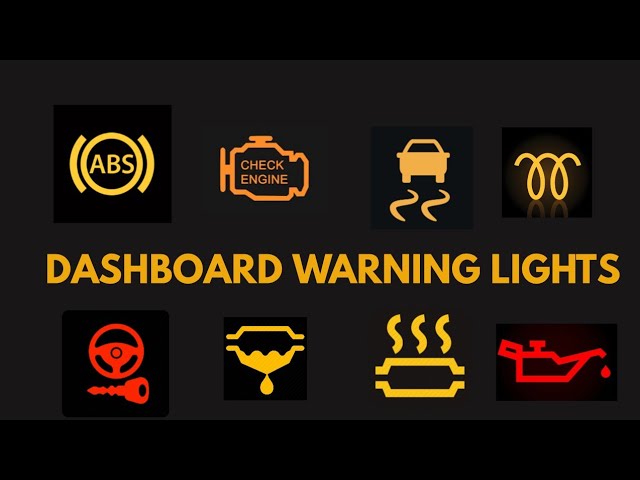Maintaining your vehicle to extend its life and ensure your safety requires paying attention to warning signs. Contemporary automobiles boast an extensive range of sensors and monitoring systems, diligently overseeing diverse components and functions of the vehicle at all times. When something goes wrong, these systems illuminate warning lights on the dashboard, alerting the driver about potential issues that require attention. However, deciphering these warning signs can be confusing for many drivers.
The Importance of Car Warning Signs
Warning signs in a car serve as early indicators of potential problems. Ignoring these warnings or dismissing them can lead to more severe and costly issues down the road. When a dashboard warning light illuminates, it’s crucial to address the problem promptly to prevent further damage and ensure your safety and the safety of others on the road.
Common Car Warning Lights and Their Meanings
Perhaps the most familiar of all warning lights, the check engine light (CEL) appears in the shape of a silhouetted engine and indicates a problem with the engine or emission control system. While it might be triggered by something as minor as a loose gas cap, it could also indicate more serious issues like a faulty oxygen sensor or catalytic converter. If the light comes on and nothing seems wrong with the car, take the car to a mechanic for a diagnostic test.
A battery/charging system warning light indicates a problem with the car’s charging system, which could be caused by a failing alternator, battery issues, or electrical faults. If your car is still running when this light appears, you could have a problem with the vehicle’s wiring, alternator, or other electrical components.
When the oil pressure warning light comes on, it suggests low oil pressure in the engine. Running the engine with low oil pressure can lead to significant engine damage.
A brake system warning light may indicate a problem with the brake system, such as low brake fluid or a malfunctioning brake component. For safety reasons, it’s crucial to have the brake system checked immediately.
The tire pressure monitoring system light looks like a partial circle with an exclamation point in the middle. This light indicates that one or more tires have low air pressure, which can affect handling, fuel efficiency, and tire longevity. Use a pressure gauge to check the tire pressure in each tire; if one is significantly low, check for damage to the tire that could be causing a leak.
If the anti-lock braking system (ABS) light remains illuminated, it suggests a malfunction in the ABS, which can affect the car’s ability to brake properly during emergencies. Another warning indicator is the airbag light, which signals a problem with the car’s airbag system. It’s important to address this issue promptly to ensure that the airbags function correctly in the event of an accident.
Finally, you might see a temperature warning light on your dashboard when the engine is overheating. Driving with an overheated engine can lead to severe damage, so it’s crucial to pull over safely and allow the engine to cool down before taking further action.
Common Signs of Potential Car Issues
Besides warning lights, your car may exhibit other signs that signal potential problems. Unusual noises such as grinding, squealing, knocking, or whining can indicate problems with various components like the brakes, suspension, or transmission. Take your car to a mechanic, who will typically test drive it to gain a better idea of where the sound is coming from.
Excessive vibrations, especially while braking or driving at high speeds, could be a sign of issues with the tires, wheels, or suspension, while puddles or drips of fluid under your parked car may indicate leaks in the engine, transmission, brake system, or cooling system. If you experience a drop in acceleration, reduced fuel efficiency, or rough idling, your vehicle might have an engine or transmission problem.
Smoke or unusual odors from the engine bay, exhaust, or interior could be indicative of fluid leaks, burning oil, or other mechanical issues. If you notice problems with the power windows or lights, you likely need the car’s electrical system checked out.
What to Do When a Warning Sign Appears
When a warning light illuminates or you notice any signs of potential problems, don’t panic. Stay calm and avoid sudden actions that could put you or others at risk. When you can safely do so, refer to the owner’s manual to understand the meaning of the warning light and recommended actions. If the warning light indicates a severe issue or if you’re uncertain about the problem, pull over safely to the side of the road and turn off the engine.
In some cases, the warning light might be triggered by a minor issue, such as an improperly tightened gas cap or low tire pressure. Check these basic components before deciding on further action. If you’re unable to diagnose the problem or the warning light persists, seek assistance from a qualified mechanic or a dealership. Whatever the cause, don’t simply ignore the warning light, even if your vehicle seems to be functioning normally. Ignoring warning signs can lead to more significant problems and higher repair costs.
